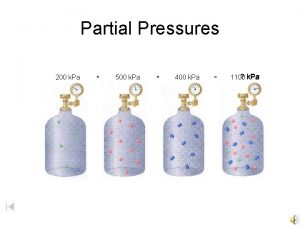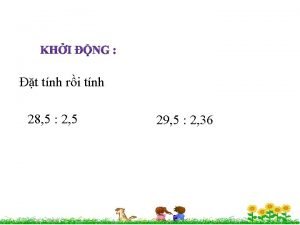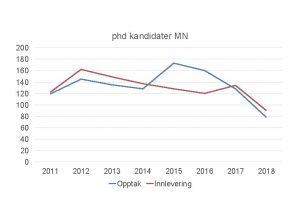180 200 156 179 120 130 101 110















- Slides: 15

180 200 156 179 120 130 101 110 30 35 3 5 11 120 150 180 30 100 B+Tree Example n=3 Root 1

B+ tree in textbook’s notation n=3 30 35 Leaf: 30 30 Non-leaf: 30 35 2

Size of nodes: n+1 pointers n keys (fixed) 3

Don’t want nodes to be too empty • Use at least Non-leaf: (n+1)/2 pointers Leaf: (n+1)/2 pointers to data 4

B+tree rules tree of order n (1) All leaves at same lowest level (balanced tree) (2) Pointers in leaves point to records except for “sequence pointer” (to next leaf) 5

(3) Number of pointers/keys for B+tree Max Min ptrs keys ptrs data Non-leaf (non-root) Leaf (non-root) Root Min keys n+1 n (n+1)/2 - 1 n+1 n (n+1)/2 n+1 n 1 1 6

Insert into B+tree (a) simple case (insert 32) – space available in leaf (b) leaf overflow (insert 7) (c) non-leaf overflow (insert 160) (d) new root (insert 45) 7

Deletion from B+tree (a) Simple case - no example (b) Coalesce with neighbor (delete 50) (c) Re-distribute keys (delete 50) (d) Cases (b) or (c) at non-leaf (delete 37) 8

B+tree deletions in practice – Often, coalescing is not implemented – Too hard and not worth it! 9

Variation on B+tree: B-tree (no +) • Idea: – Avoid duplicate keys (leaf and non-leaf) – Have record pointers in non-leaf nodes 10

K 1 P 1 to keys < K 1 K 2 P 2 K 3 P 3 to record with K 1 with K 2 with K 3 to keys K 1<x<K 2 K 2<x<k 3 to keys >k 3 11

170 180 150 160 130 140 110 120 90 100 70 80 50 60 30 40 10 20 145 165 85 105 25 45 65 125 B-tree example n=2 12

170 180 150 160 145 165 110 120 90 100 70 80 50 60 30 40 10 20 25 45 85 105 (but keep space for simplicity) 130 140 • sequence pointers not useful now! n=2 65 125 B-tree example 13

Note on inserts leaf 10 20 30 • Say we insert record with key = 25 n=3 14

Note on inserts • Say we insert record with key = 25 25 30 10 – 20 – • Afterwards: 10 20 30 leaf n=3 15
 100+200+200
100+200+200 000 111 000
000 111 000 Où se trouve le numéro d'affiliation mutuelle vignette ?
Où se trouve le numéro d'affiliation mutuelle vignette ? If , what is ? 20° 70° 110° 130°
If , what is ? 20° 70° 110° 130° 100+120+140+160+180
100+120+140+160+180 101 102 103 104 105 106 107 108
101 102 103 104 105 106 107 108 1 10 11 100 101 110 111 1000 1001 1010
1 10 11 100 101 110 111 1000 1001 1010 120px x 120px
120px x 120px 120/100*80
120/100*80 49 un yüzde 40'ı kaçtır
49 un yüzde 40'ı kaçtır 120factors
120factors 200+160+120
200+160+120 The partial pressure of oxygen was observed to be 156 torr
The partial pressure of oxygen was observed to be 156 torr Ley 24 156
Ley 24 156 Factors of 156
Factors of 156 98 156 chia 4 63
98 156 chia 4 63





























